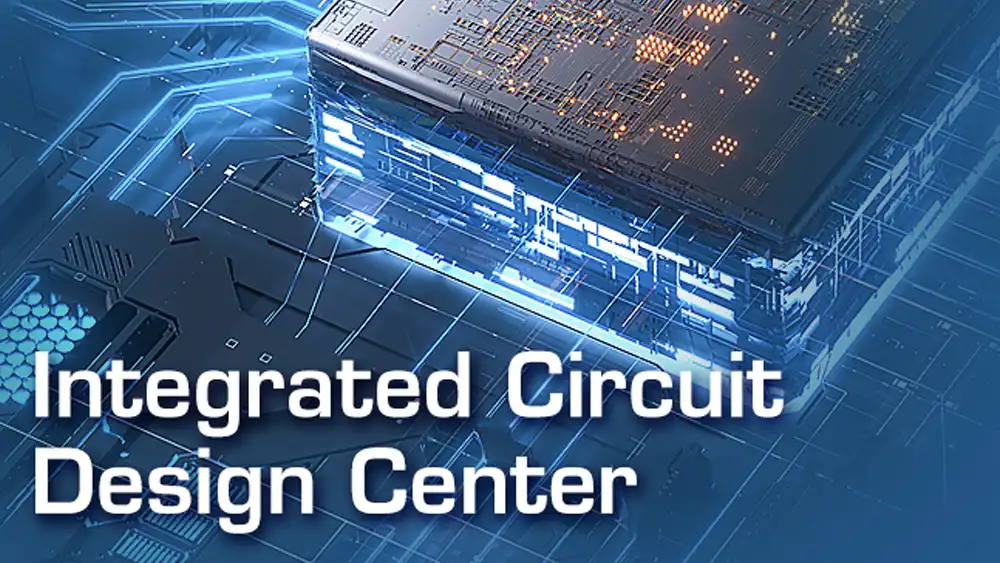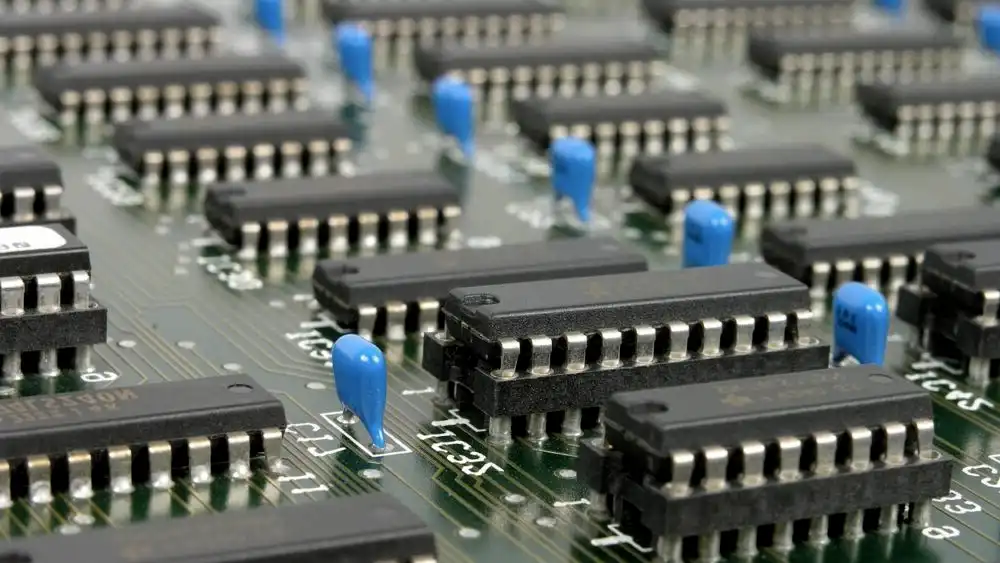What is an Integrated Circuit
Integrated Circuits (ICs) are the backbone of modern electronics. Also known as microchips or simply chips, ICs are semiconductor devices that integrate a large number of tiny resistors, capacitors, and transistors into a small chip. They form the essential building blocks for most electronic devices, enabling complex functionalities in computers, smartphones, and other digital equipment.
Importance of Integrated Circuits
The significance of integrated circuits lies in their ability to perform complex tasks while being compact and energy-efficient. They have revolutionized the electronics industry by making devices smaller, faster, and more reliable. ICs are pivotal in advancing technology, driving innovations in fields such as computing, telecommunications, and medical devices.
Evolution of Integrated Circuits
The journey of integrated circuits began in the 1950s. The invention of the transistor in 1947 laid the foundation, but it was not until 1958 when Jack Kilby of Texas Instruments created the first true IC. Shortly after, Robert Noyce of Fairchild Semiconductor developed a more practical version using silicon. These innovations set the stage for the rapid development of ICs.
How to Design an Integrated Circuit

Step 1. Specification
Defining Requirements and Functionalities
The first step in designing an IC is to define its specifications. This involves understanding the requirements of the end product and outlining the functionalities that the IC must perform. Key considerations include:
- Performance Criteria: Speed, power consumption, and processing capabilities.
- Physical Constraints: Size, layout, and integration with other components.
- Environmental Conditions: Operating temperature range and resistance to electromagnetic interference.
- Compliance: Adherence to industry standards and regulatory requirements.
Step 2. Architecture Design
Creating a High-Level Design
Once the specifications are clear, the next step is to develop the architecture of the IC. This high-level design phase involves:
- Block Diagram: Creating a block diagram that represents the major functional blocks of the IC and their interconnections.
- Interface Definition: Defining the interfaces between different blocks and with external components.
- Function Partitioning: Dividing the overall functionality into smaller, manageable sub-functions.
Step 3. Circuit Design
Developing Detailed Schematics
In the circuit design phase, the high-level architecture is translated into detailed circuit schematics. This involves:
- Component Selection: Choosing the appropriate transistors, resistors, capacitors, and other components.
- Circuit Configuration: Designing the configuration of these components to achieve the desired functionality.
- Simulation: Running initial simulations to verify the behavior of the circuit under different conditions.
Step 4. Simulation
Verifying the Design through Simulations
Simulation is a critical step to ensure that the designed circuit meets the required specifications. Tools such as SPICE (Simulation Program with Integrated Circuit Emphasis) are commonly used. The simulation process involves:
- Functional Verification: Ensuring that the circuit performs the intended functions correctly.
- Performance Analysis: Evaluating metrics such as speed, power consumption, and signal integrity.
- Stress Testing: Testing the circuit under extreme conditions to ensure reliability.
Step 5. Layout Design
Translating Schematics into Physical Layout
After successful simulation, the circuit design is converted into a physical layout. This step involves:
- Floorplanning: Arranging the major blocks of the IC in a manner that optimizes space and performance.
- Placement: Placing individual components within the designated areas.
- Routing: Connecting the components with metal interconnects to ensure correct signal pathways.
- Design Rule Checking (DRC): Ensuring that the layout adheres to manufacturing constraints and design rules.
Step 6. Fabrication
Manufacturing the Chip Using Semiconductor Processes
The finalized layout is sent to a semiconductor foundry for fabrication. This process includes:
- Photolithography: Using light to transfer the circuit patterns onto a silicon wafer.
- Doping: Introducing impurities to modify the electrical properties of the silicon.
- Etching and Deposition: Removing and adding material layers to form the circuit structures.
- Packaging: Encasing the silicon chip in a protective package with necessary electrical connections.
Step 7. Testing
Validating the Functionality of the Fabricated IC
The final step is to test the fabricated IC to ensure it meets the original specifications. Testing involves:
- Parametric Testing: Measuring electrical parameters such as voltage, current, and power.
- Functional Testing: Verifying that the IC performs all intended functions correctly.
- Burn-In Testing: Operating the IC at elevated temperatures and voltages to identify potential early failures.
Advanced Techniques
Enhancing IC Design and Performance
- Design for Testability (DFT): Incorporating features that facilitate easier testing and debugging of the IC.
- Low Power Design: Implementing techniques like multi-threshold CMOS and power gating to reduce power consumption.
- High-Speed Design: Ensuring signal integrity and minimizing delays to achieve high-speed performance.
Key Milestones
- 1958: First IC by Jack Kilby
- 1961: First commercially available IC
- 1971: Introduction of the microprocessor by Intel
- 1980s: Advent of Very Large Scale Integration (VLSI)
- 2000s: Transition to nanometer-scale technologies
Key Principles of Integrated Circuit Design

Semiconductor Physics
Understanding the physics of semiconductors is crucial for IC design. Semiconductors, typically silicon, have properties that allow them to conduct electricity under certain conditions, making them ideal for creating electronic switches and amplifiers.
Digital Logic
Digital logic forms the foundation of ICs, where binary values (0s and 1s) are used to perform calculations and processing tasks. Logic gates, such as AND, OR, and NOT gates, are the basic building blocks that combine to form more complex circuits like adders and multiplexers.
Design Hierarchy
IC design follows a hierarchical approach, from system-level design down to the layout of individual transistors. This hierarchy ensures that designers can manage complexity and verify functionality at various levels.
Methodologies and Tools for Integrated Circuit Design
Design Methodologies
- Top-Down Design: Starts from the high-level system specifications and moves down to the implementation details.
- Bottom-Up Design: Begins with the creation of fundamental building blocks, which are then integrated to form the complete system.
Design Tools
- Electronic Design Automation (EDA): Software tools like Cadence, Synopsys, and Mentor Graphics are essential for designing and verifying ICs.
- Simulation Tools: SPICE simulators are used for analog circuit simulation, while VHDL/Verilog simulators are used for digital circuits.
Technical Specifications of Integrated Circuit Design
Process Technology
The process technology refers to the manufacturing process used to create the IC. Key metrics include feature size (measured in nanometers), which determines the density of transistors on the chip, and the number of metal layers for interconnections.
Power and Performance
Power consumption and performance are critical factors. Designers aim to optimize these through techniques like voltage scaling, clock gating, and the use of high-performance materials.
Packaging
The packaging of an IC protects it from physical damage and environmental effects while providing the necessary electrical connections. Common packaging types include DIP (Dual In-line Package), QFP (Quad Flat Package), and BGA (Ball Grid Array).
Applications of Integrated Circuit
Consumer Electronics
ICs are ubiquitous in consumer electronics, powering devices such as smartphones, tablets, and home appliances. They enable functionalities like touchscreens, connectivity, and multimedia processing.
Automotive Industry
In the automotive sector, ICs are crucial for engine control units (ECUs), infotainment systems, and advanced driver-assistance systems (ADAS). They enhance vehicle performance, safety, and comfort.
Medical Devices
ICs in medical devices improve diagnostics, monitoring, and treatment. Applications include pacemakers, MRI machines, and portable health monitors, contributing to better healthcare outcomes.
Telecommunications
ICs facilitate the operation of communication networks, from mobile phones to satellite systems. They handle signal processing, data transmission, and network management, ensuring reliable and high-speed communication.
Benefits of Integrated Circuit
Miniaturization
Integrated circuits allow for the miniaturization of electronic devices, leading to more compact and portable gadgets without compromising functionality.
Cost Efficiency
Mass production of ICs lowers the cost per unit, making advanced technology affordable and accessible to a broader audience.
Reliability
ICs enhance the reliability of electronic devices by reducing the number of solder joints and interconnections, which are common points of failure in traditional circuits.
Performance
With advancements in IC technology, devices have become faster and more efficient, capable of handling complex tasks with ease.
Challenges and Limitations
Heat Dissipation
As ICs become more powerful, managing heat dissipation becomes a significant challenge. Excessive heat can impair performance and reduce the lifespan of the chip.
Power Consumption
Balancing performance with power consumption is critical, especially for battery-operated devices. Designers must optimize circuits to ensure energy efficiency.
Manufacturing Complexity
The fabrication of ICs involves sophisticated processes and equipment. As feature sizes shrink, maintaining precision and yield becomes increasingly difficult.
Comparative
Integrated Circuits vs. Discrete Components
ICs offer significant advantages over discrete components in terms of size, performance, and reliability. However, discrete components are still used in applications where customization and flexibility are paramount.
Silicon vs. Other Semiconductors
While silicon remains the dominant material for ICs, other materials like gallium arsenide (GaAs) and silicon carbide (SiC) are used for specialized applications requiring high-speed or high-power performance.
User Guides of Integrated Circuits Design
Basic Steps in IC Design
- Specification: Define the requirements and functionalities.
- Architecture Design: Create a high-level design.
- Circuit Design: Develop detailed schematics.
- Simulation: Verify the design through simulations.
- Layout Design: Translate schematics into physical layout.
- Fabrication: Manufacture the chip using semiconductor processes.
- Testing: Validate the functionality of the fabricated IC.
Advanced Techniques
- Design for Testability (DFT): Incorporating features that facilitate testing.
- Low Power Design: Techniques like multi-threshold CMOS and power gating.
- High-Speed Design: Ensuring signal integrity and minimizing delay.
Conclusion
The design of integrated circuits is a complex and fascinating field that underpins much of modern technology. As we continue to push the boundaries of what is possible, ICs will play an even more critical role in shaping the future of electronics and computing.




















